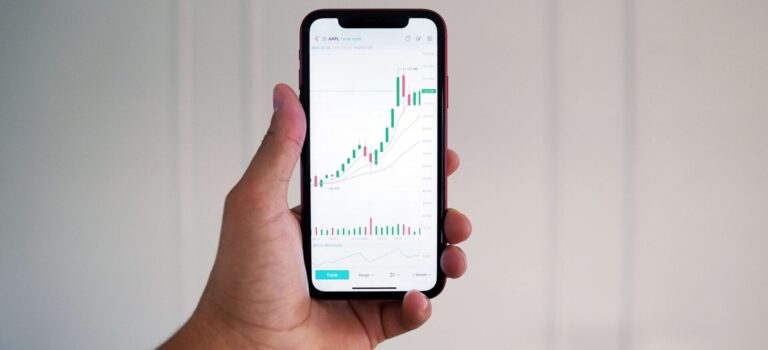The Investor Guide to Vanguard Funds for July is AVAILABLE NOW! Links to the July data files are posted below. Market Perspective: Potential Rate Cut on the Horizon The Nasdaq […]


The Investor Guide to Vanguard Funds for July is AVAILABLE NOW! Links to the July data files are posted below. Market Perspective: Potential Rate Cut on the Horizon The Nasdaq […]

This week was a pivotal one for market participants who were hoping for a rate cut in the near future. On Thursday, monthly and annual CPI figures were released, and for the most part, they came in better than expected. On an annual basis, inflation came in at 3 percent, which beat the expected 3.1 percent prior to the release.
On a monthly basis, Core CPI was up .1 percent while overall CPI was down .1 percent. Core CPI was expected to be .2 percent for the month while overall CPI was expected to be .1 percent. Shortly after the news broke, Fed member Goolsbee posted a message on X saying that the numbers were to be expected if inflation were moving back toward 2 percent.
The good news sparked speculation that the Fed might be ready to cut interest rates as soon as September. Fed Chair Jerome Powell and other members of the Fed have acknowledged that policy is restrictive, and economic data has continued to show a slowdown in economic activity.
On Tuesday and Wednesday, Powell testified to members of the House and acknowledged that inflation is not the only hazard the economy faces. In addition, a labor shortage could also cause a recession or other problems for consumers and businesses. Therefore, if hiring begins to slow, it may also be a reason to cut rates even if inflation isn’t all the way back to 2 percent.
Powell also said that he was somewhat confident that inflation was going back to 2 percent and that there was no set number in mind before rate cuts could occur. He also declined to provide any guidance as to when the first cut would occur, so a September cut is still little more than speculation at this point.
On Friday, the Price Producer Index (PPI) was released and seemed to be at odds with Thursday’s developments. The Core PPI on a monthly basis increased by .4 percent while the prices of all goods went up by .2 percent. It was expected that Core PPI would go up by .2 percent while overall PPI would go up by .1 percent.
However, many who have had a chance to dive deeper into the data say that the increase is largely attributable to random volatility. Ultimately, the notion that inflation is cooling is the correct one and that rate cuts should still be on the table at some point this year.
In other news this week, unemployment claims came in at 222,000 compared to an expected 236,000. On Friday, the University of Michigan released its consumer sentiment and inflation expectation reports. They found that consumer sentiment dipped to 66 percent compared to an expected 68.5 percent. It was also revealed that consumers believed inflation would be at 2.9 percent 12 months from now.
The S&P 500 continued to make new highs as it finished the week at 5,615. During the last five trading days, the market gained 40.88 points, which was a .73 increase. The market made its low of the week on Monday when it dipped to 5,563 and made its high of the week on Friday when the market hit 5,651.
The Dow finished up 447 points to finish at just over 40,000. On Tuesday morning, the Dow reached its low of the week when it dipped to 39,190. On Friday afternoon, the market made its high of the week at 40,234.
The Nasdaq finished at 20,331, which was a dip of .23 percent for the week. The market would make its high of the week on Wednesday at 20,667 before falling to its low of the week 20,173 on Thursday afternoon.
In international news, the Bank of Japan (BOJ) reportedly intervened in the foreign exchange (FOREX) markets on behalf of the Yen on Thursday. The intervention reportedly cost the BOJ the equivalent of $22 billion. On Tuesday night, New Zealand announced it was holding its core interest rate steady at 5.5 percent. On Thursday morning, Great Britain announced that its gross domestic product (GDP) grew by .4 percent on a monthly basis.
The upcoming week will feature a few key news releases with the first coming on Monday when the Empire State Manufacturing report is released. On Tuesday, retail sales data will be made public while unemployment claims data comes out on Thursday. Jerome Powell is also scheduled to talk on Monday afternoon.
The Investor Guide to Fidelity Funds for July 2024 is AVAILABLE NOW! July Data Files Are Posted Below Market Perspective: Index Gains Driven by Only a Few Stocks Equities moved higher […]

Even with a shortened trading week due to the Independence Day holiday, there was plenty of news released to keep investors occupied. The first major piece of news came out on Monday when the ISM Manufacturing PMI figure was released. It came in at 48.5 percent, which indicates that the manufacturing sector is in a recession. The June figure was lower than last month’s 48.7 percent as well as lower than the projected 49.2 percent.
On Tuesday, the Jobs Openings and Labor Turnover Survey (JOLTS) report was released. It found that there were 8.41 million jobs available in June, which was higher than the expected 7.96 million. It was also higher than last month’s revised total of 7.92 million.
Jerome Powell spoke on Tuesday and said that significant progress has been made on inflation. He also said that he expects the inflation rate to be around 2.5 percent this time next year. Powell also sought to discourage notions that rates couldn’t go back to where they were during the pandemic. During that period, the key rate was set at 0 percent.
A few important releases were made public on Wednesday. First, the ADP nonfarm payroll report found that the economy added 150,000 jobs in the past month. This was lower than the expected 163,000 jobs added and lower than last month’s gain of 157,000 positions.
The ISM Services PMI was next to be released on Wednesday and came in at 48.8 percent, which was far lower than the expected 52.6 percent and was also below last month’s figure of 53.3 percent. This has led some to say that the economy is finally starting to show signs of a true slowdown, which may make it easier to justify lower interest rates.
Finally on Wednesday, the FOMC meeting minutes from June were released. The main takeaway from those minutes was that inflation was moving in the right direction to see possible rate cuts later in the year. However, the Fed still wanted more evidence that this was the case before taking action.
Markets were closed for the holiday on Thursday, but they made up for lost time with some consequential news on Friday morning. The Bureau of Labor Statistics (BLS) released its nonfarm payroll report that said 206,000 jobs were added over the previous month. This was more than the 191,000 expected prior to the release but fewer than the 218,000 added last month.
It’s also worth noting that initial figures from April and May were revised downward. The April figure was revised downward to 108,000 from 165,000 while the May report was changed to 218,000 from an initial reading of 272,000. The unemployment number jumped to 4.1 percent, and this is the third straight month in which this figure has increased.
Average hourly earnings increased .3 percent on a monthly basis in June, which matched expectations. However, it does represent a slight slowdown from the .4 percent increase in May.
The S&P 500 finished the week up 67.82 points to close at 5,567. The index made its low of the week on Monday morning when it dipped to 5,447 and closed the week at its highest point.
The Dow was flat this week closing up 67.46 points to finish at 39,375 at the end of trading Friday. The low of the week was made on Monday morning at 39,115 while the high was made on Wednesday morning when the market hit 39,389.
Finally, the Nasdaq would close the week above 20,000 for the first time as it gained over 540 points to finish at 20,391. That represented a 2.74 percent gain for a market that has gained more than 21 percent during 2024.
On Tuesday and Wednesday, Jerome Powell is expected to testify in front of the House Financial Services Committee. On Thursday, inflation data is set to be released while price change data will be released on Friday.

The final full week of June saw a lot of substantial news, worthy of investor attention. On Tuesday, the CB Consumer Confidence Index was released and came in at 100.4, which is slightly lower than last month’s 101.3. However, it was slightly higher than the 100 that analysts expected prior to the release.
On Wednesday, new home sales data came out and revealed that 619,000 homes had been sold in the past month. It was believed that about 636,000 homes would be sold in the previous month, and the June figure was much lower than the 698,000 from last month. Interest rates have been cited as a major factor in the housing market slump over the past 30 days.
On Thursday, it was revealed that there was a 2.1 percent decrease in the number of pending sales. This means that the market could be in a slump for an extended period as fewer people are even entering into contracts to buy homes. If you’re looking for a silver lining, home sales retreated 7.7 percent in May, so there was a relative improvement in this month’s report.
Also on Thursday, it was revealed that the final gross domestic product (GDP) grew by 1.4 percent in the first quarter of 2024. This was in line with analyst expectations and is the smallest quarterly gain since the economy entered a technical recession in 2022. Finally, unemployment claims data was released on Thursday morning and found that 233,000 people sought benefits in the last seven days. This was about 3,000 fewer than expected and about 6,000 fewer than last week.
On Friday, the monthly Core PCE price index came out, and it presented some good news on the inflation front. The June report indicated that prices increased by just .1 percent, which matched expectations and was the lowest figure since December 2023. Combined with other data released in previous weeks, it could indicate that the Fed might be willing to cut rates before December.
Despite the news this week, the S&P 500 remained almost flat for the week, increasing by just 3.7 points over the last five trading days. The market now stands at 5,460.68, which is near yearly and all-time highs. The low of the week came late Monday afternoon when the market touched 5,452 while the weekly high came on Friday morning when the index hit 5,522.
The Dow also was relatively flat this week closing lower by .31 percent to finish at 39,118. This translates to a loss of 122 points, but it still keeps the market near all-time highs. For the week, the Dow made a low of 38,959 on Wednesday morning and a high of 39,381 on Friday afternoon.
The Nasdaq would also gain only modestly this week finishing up .43 percent to close at 17.732. A weekly high was made Friday morning at 18,027 while the weekly low was made on Monday afternoon when the market dipped to 17,526. As with the other two major indexes, the Nasdaq is also close to its all-time high.
In international news, Canada announced on Tuesday morning that its monthly inflation rate was .6 percent while its annual inflation rate was 2.9 percent. On Tuesday evening, Australia announced that its inflation rate was 4 percent on an annual basis, higher than the expected 3.8 percent. On Thursday night, Japan announced that its inflation rate was 2.1 percent on an annual basis, which was slightly higher than the expected 2 percent.
This upcoming week will be a hectic one despite, the July 4 holiday. On Wednesday, the ADP nonfarm payroll report will come out while the BLS version will come out on Friday. It’s believed that the ADP report will show a net gain of 156,000 jobs while the BLS report will indicate a net gain of 189,000 jobs. In addition, Jerome Powell will speak on Tuesday while the FOMC meeting minutes will be released on Wednesday.